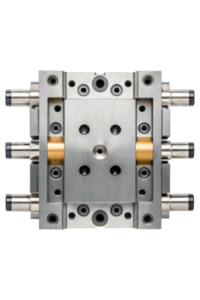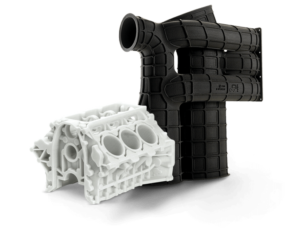SLA 3D Printing: The Best Choice for High-Detail Prototypes
3D printing has revolutionized the way products are designed, developed, and tested. When it comes to creating high-detail prototypes, SLA (Stereolithography) 3D printing is often considered the best choice. Known for its precision and smooth surface finishes, SLA 3D printing allows manufacturers, designers, and engineers to create prototypes that closely resemble the final product. In this guide, we’ll explore why SLA is the gold standard for high-detail prototypes.
What is SLA 3D Printing?
SLA (Stereolithography) is one of the earliest 3D printing technologies and continues to be highly valued in industries that require detailed prototypes. It works by using liquid resin that is cured layer by layer with the help of an ultraviolet (UV) laser. This process allows SLA to create parts with incredible detail and smooth finishes that many other 3D printing methods struggle to match.
In simple terms, SLA 3D printing uses a laser to solidify liquid resin, building the object from the bottom up, layer by layer. This process enables the creation of extremely detailed and accurate prototypes.
Why is SLA 3D Printing Ideal for High-Detail Prototypes?
There are several reasons why SLA 3D printing is considered the best for creating high-detail prototypes. Let’s break them down:
1. Precision and Detail
SLA is known for its precision. The laser used in the process is extremely fine, which allows for creating parts with exceptional detail. The layer resolution can be as fine as 25 microns, which means that even the smallest features of your design will be accurately replicated in the prototype.
When compared to other methods like FDM (Fused Deposition Modeling), which uses thicker layers, SLA can capture details like tiny holes, sharp edges, and smooth curves. This makes it an ideal choice for industries where accuracy and fine detail are critical, such as jewelry, dental, and medical device design.
2. Smooth Surface Finish
Another reason SLA 3D printing is the gold standard for prototypes is its smooth surface finish. The laser curing process results in parts with minimal texture. This smooth finish often requires little to no post-processing, unlike other methods that may leave visible layer lines on the surface.
If your project requires prototypes with highly polished surfaces or precise textures, SLA is the best choice. For example, in the jewelry industry, the smooth finish of SLA parts is highly valued because it reduces the amount of polishing needed after the prototype is printed.
3. Accuracy in Complex Geometries
SLA is perfect for prototypes with complex geometries. It can handle intricate shapes and small features that would be difficult or impossible to achieve with other 3D printing methods. Whether your design involves tight tolerances, thin walls, or complex internal structures, SLA can produce these features with ease.
This level of accuracy makes SLA ideal for prototyping mechanical parts, aerospace components, and biomedical devices, where precise dimensions are crucial.
4. Variety of Resins for Different Needs
SLA 3D printing uses different types of resins, allowing you to choose the material that best suits your project’s needs. There are resins designed for strength, flexibility, transparency, and even heat resistance. This variety gives you the ability to choose the material that most closely matches the properties of the final product.
For example, if you’re working on a prototype that needs flexibility, you can opt for flexible resins. If your prototype needs to withstand high temperatures, there are heat-resistant resins available as well.
Applications of SLA 3D Printing for Prototypes
SLA 3D printing is used across various industries, from automotive to healthcare. Some common applications include:
1. Product Prototyping
SLA is often used to create functional prototypes that simulate the look, feel, and function of a final product. This is especially useful for designers and engineers who want to test how a product will perform before committing to full-scale production.
2. Medical and Dental
In the medical and dental industries, SLA 3D printing is used to create highly detailed models of organs, bones, and teeth. These models are used for surgical planning, patient education, and even custom medical devices. The precision and smooth surface finish of SLA make it ideal for creating medical prototypes that require high levels of accuracy.
3. Jewelry Design
SLA is popular in the jewelry industry for creating detailed wax models for casting. Designers can create prototypes with intricate patterns and fine details that are difficult to achieve with traditional methods. These prototypes are then used to make the final metal pieces.
4. Aerospace and Automotive Parts
SLA is used to create prototypes for aerospace and automotive industries where accuracy and performance are critical. Components like engine parts, brackets, and custom fittings can be created using SLA printing to test their functionality before they are mass-produced.
Advantages of SLA 3D Printing for Prototypes
Here are some key benefits of using SLA 3D printing for high-detail prototypes:
1. High Accuracy and Fine Detail
As mentioned earlier, SLA 3D printing provides a level of accuracy and detail that is unmatched by most other 3D printing methods. This is crucial when the design includes intricate features or requires a perfect fit.
2. Excellent Surface Finish
SLA parts have a smooth and polished finish, often requiring little to no post-processing. This is especially important for industries like jewelry and dental, where the visual quality of the prototype is just as important as its function.
3. Fast Prototyping
While SLA can be slower than some methods like FDM for larger objects, it is still relatively fast compared to traditional manufacturing methods. It allows for quick iterations of prototypes, helping you test and refine designs without long lead times.
4. Versatility with Materials
SLA offers a wide variety of resins, allowing users to choose materials that meet their specific needs, whether it’s flexibility, transparency, or heat resistance.
Challenges of SLA 3D Printing
While SLA is the gold standard for high-detail prototypes, it does have a few limitations:
1. Limited Build Volume
SLA printers typically have a smaller build volume compared to FDM printers. This means that large parts may need to be printed in sections and assembled later.
2. Post-Processing Required
Although SLA produces smooth parts, some level of post-processing is required, including cleaning the parts and removing supports. This process can be time-consuming.
3. Material Cost
SLA resins tend to be more expensive compared to filament used in FDM printing. However, the benefits of precision and detail often outweigh the higher material costs for high-end prototypes.
How to Choose SLA 3D Printing for Your Next Project
If your project requires high-detail prototypes with precision and smooth finishes, SLA 3D printing is the way to go. Whether you’re testing new product designs, creating medical models, or designing jewelry, SLA offers unmatched accuracy and versatility.
FAQs
1. What is the main benefit of SLA printing?
The main benefit of SLA printing is its ability to create highly detailed prototypes with smooth surface finishes. It is ideal for projects that require fine features and accuracy.
2. What materials can be used in SLA printing?
SLA printing uses various types of resins, including flexible resins, heat-resistant resins, and clear resins, depending on the needs of the project.
3. Is SLA suitable for mass production?
While SLA is excellent for prototyping, it is not as efficient for mass production due to its limited build volume and relatively slower printing speeds compared to other methods like FDM.
4. What industries benefit from SLA 3D printing?
SLA 3D printing is widely used in industries such as medical, dental, aerospace, automotive, and jewelry design, where high detail and precision are required.
5. How accurate is SLA 3D printing?
SLA 3D printing offers high precision with a layer resolution of up to 25 microns, making it one of the most accurate 3D printing technologies.


